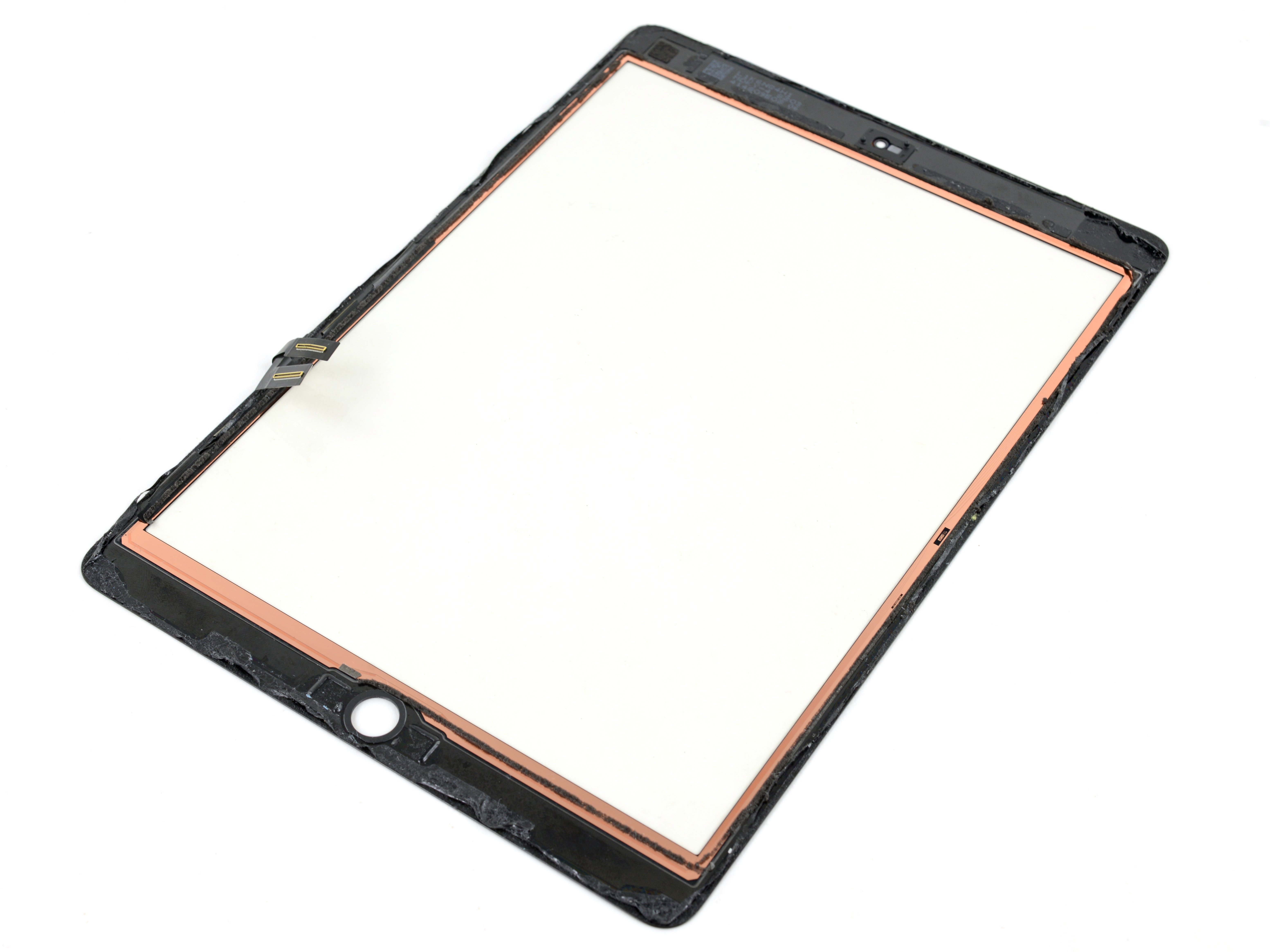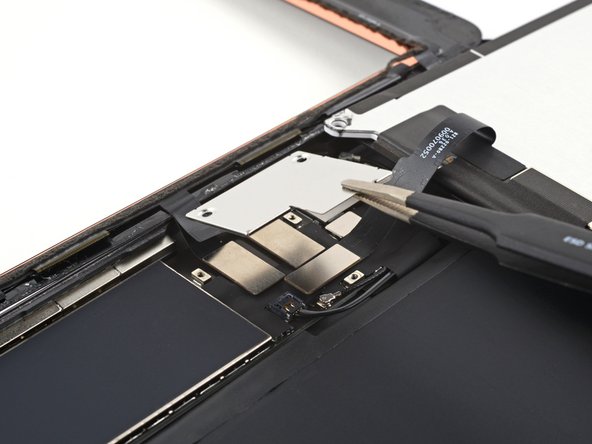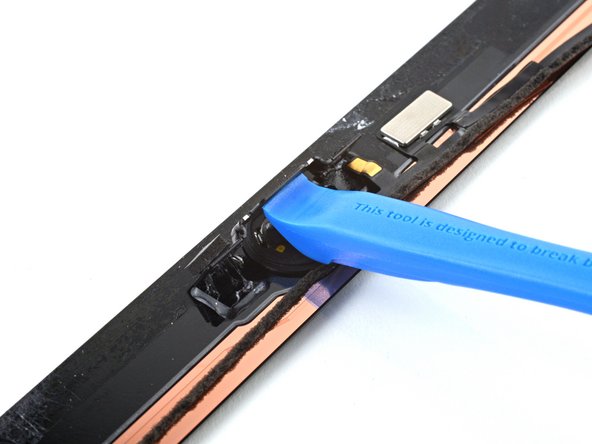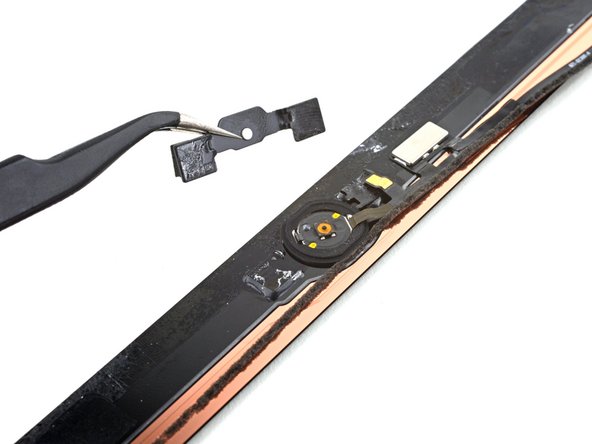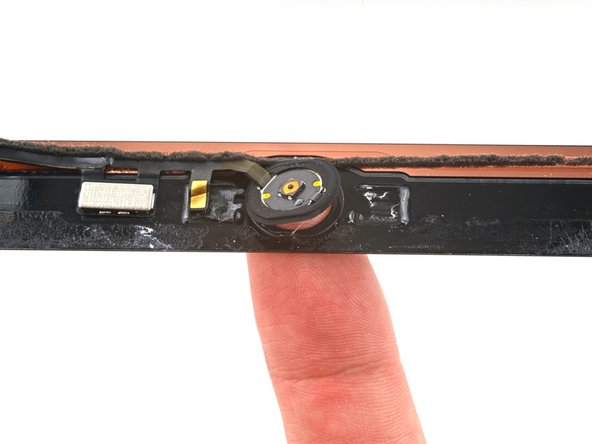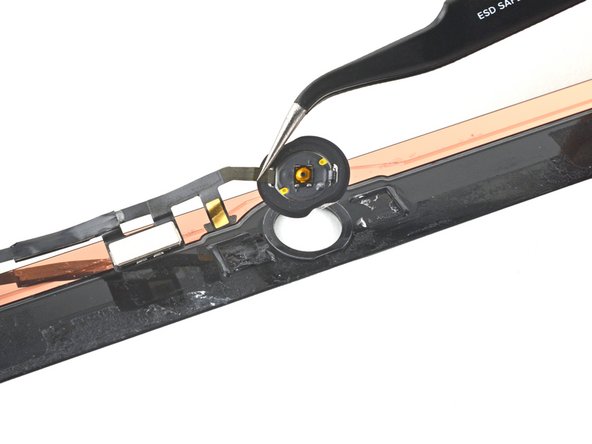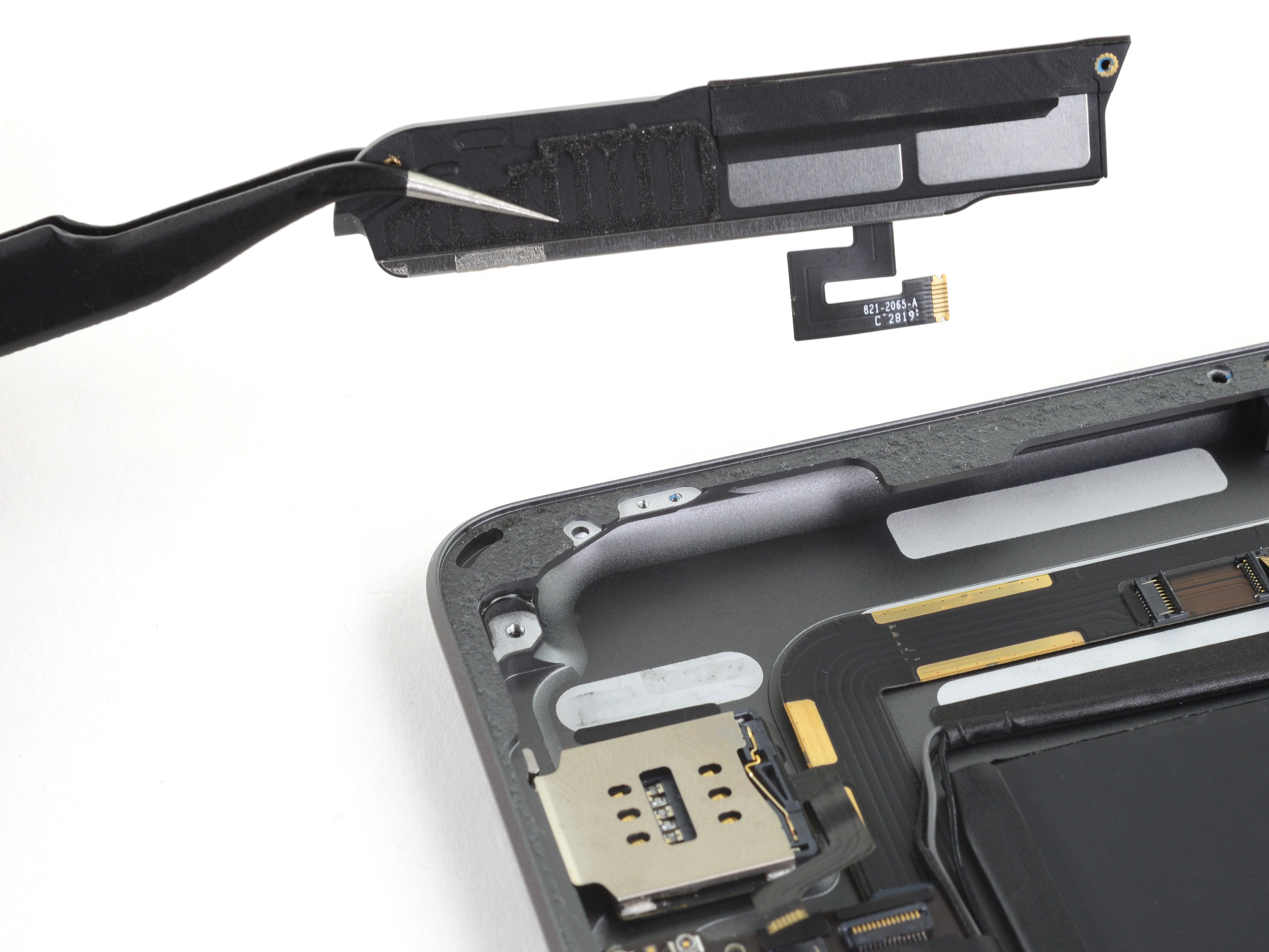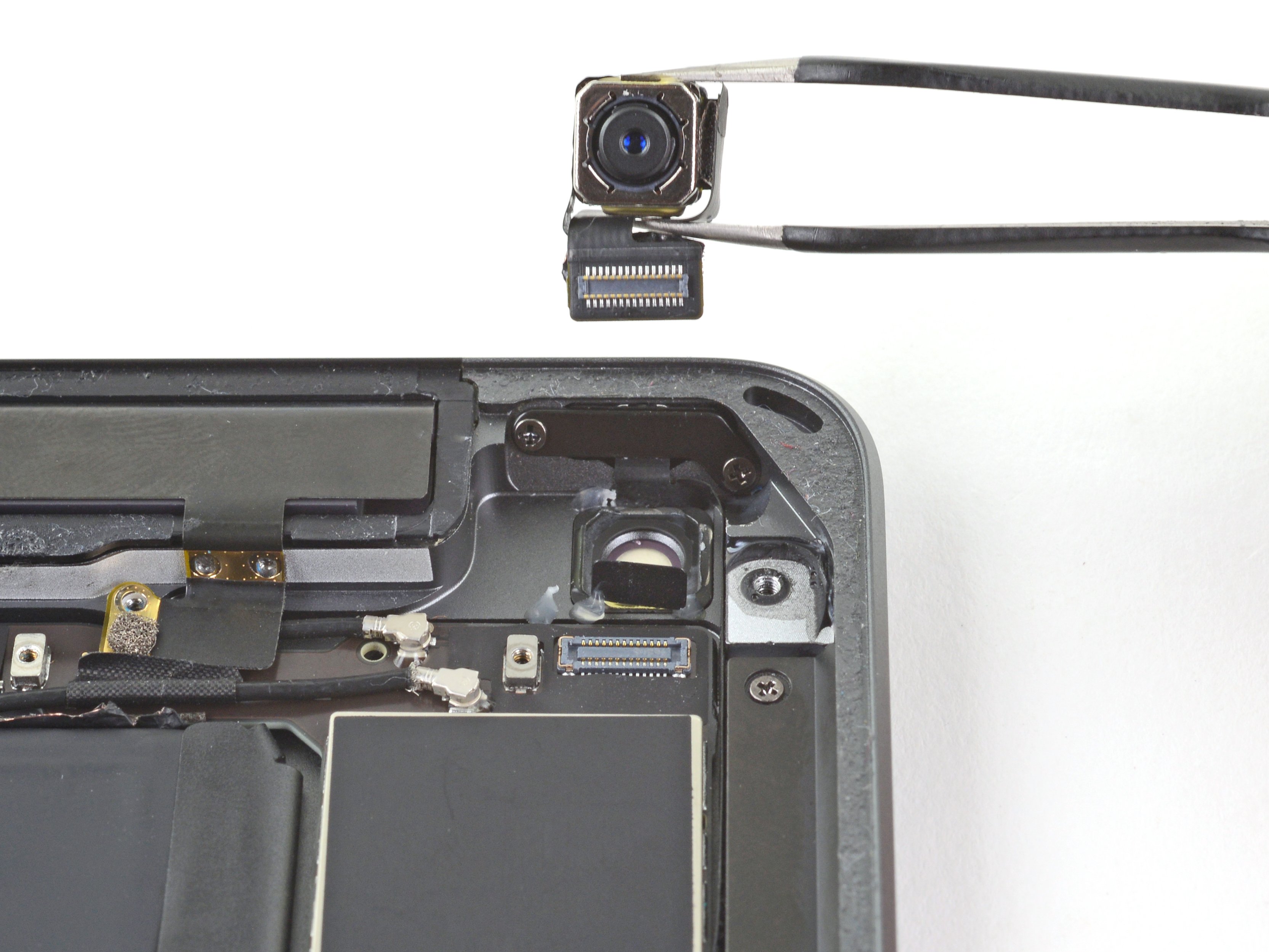iPad 8 LTE Screen Digitizer Replacement
Duration: 45 minutes
Steps: 55 Steps
Alright, let's talk home button! The Touch ID sensor is best buddies with the logic board, so to keep that awesome Touch ID magic alive, you'll need to carefully transfer and stick the original home button onto the new front panel assembly. You've got this!
Follow this guide to swap out the screen digitizer on an iPad 8 LTE. Keep in mind, the screen digitizer covers just the front glass and digitizer—no LCD panel included. Heads up: this walkthrough is for the LTE model only. If you have the Wi-Fi version, check out the separate instructions. The home button’s Touch ID sensor is tied to the logic board, so to keep Touch ID working, you’ll need to move and carefully glue the original home button onto the new front panel assembly. When disconnecting the battery with a battery blocker, handle with care—the battery contacts are fragile and can bend or break easily, causing permanent damage. If you decide to skip isolating the battery, avoid metal tools unless absolutely necessary (like for screws) to prevent short circuits and protect delicate components. Some photos may be from other models and look a bit different, but that won’t mess with the repair steps.
Step 1
- Warm up that iOpener and stick it on the left side of your device for a cozy two minutes!
Tools Used
Step 2
- While you wait for the adhesive to loosen up, keep an eye on these sensitive areas that are a bit too delicate for prying:
- Front camera
- Antennas
- Display cables
Step 3
The next three steps are all about using the Anti-Clamp, a nifty little tool we created to make opening up your device a breeze. If you’re not using the Anti-Clamp, just skip ahead three steps for an alternative method.
For a deep dive into how to use the Anti-Clamp like a pro, check out this guide.
If your iPad is being too slippery for the Anti-Clamp to grab onto, no worries! Just stick some tape on the surface to give it a better grip.
- Slide the blue handle backward to release the Anti-Clamp's arms.
- Prop up your iPad on something so it sits nice and level between the suction cups.
- Place the suction cups close to the center of the left edge—one near the top, the other near the bottom.
- Keep the bottom of the Anti-Clamp steady while pressing down firmly on the top cup to create suction.
Step 4
- Slide that blue handle forward to lock those arms in place like a pro!
- Now, give that handle a twist—360 degrees or until those suction cups start to stretch out. You've got this!
- Keep an eye on those suction cups to ensure they stay in sync. If they start to wander off course, just loosen them a bit and guide those arms back into alignment.
Step 5
Turn no more than half a twist at a time, then chill for a minute. Let the Anti-Clamp and a little patience do their magic!
For full details on how to use a hair dryer, take a look at this guide.
If the Anti-Clamp doesn’t open up enough space, just warm the area a bit more and give the handle a half-turn clockwise.
- Take a breather for a minute to let that adhesive loosen up and open up a little gap for you.
- If your screen isn't warming up as it should, feel free to grab a hair dryer and gently warm up the left edge of your iPad.
- Slide an opening pick under the digitizer once the Anti-Clamp has made a nice enough gap for you.
- You can skip the next step!
Step 6
Got a screen that looks like it went a few rounds with a hammer? No worries—slap some clear packing tape over it so your suction cup has something to grip. If tape alone feels like the hero of the day, you can even skip the suction cup altogether and just pull with the tape. Worst-case scenario, grab a dab of superglue to lock the suction cup to the busted glass and keep moving forward.
- Once the screen feels warm to the touch, grab a suction handle and place it as close to the left edge as possible. Nice and easy.
- Gently lift the screen with the suction handle, just enough to create a small gap between the digitizer and the frame.
- Slide an opening pick into that gap and carefully work it between the digitizer and the frame. Take it slow—you're almost there!
Tools Used
Step 7
No need to stress if you spot the opening pick peeking through the digitizer — just give it a gentle pull. The LCD screen should be just fine, but you might want to watch out for any sticky adhesive that could be a bit of a hassle to clean up later.
- Slip a second opening pick into the gap you've just made.
- Gently glide the pick toward the bottom-left corner of your device to loosen up the adhesive.
- Once you're there, leave the pick in the corner to keep the adhesive from sticking back together.
Step 8
- If your opening pick gets stubborn and sticks to the adhesive, try 'rolling' it gently along the edge of the iPad to keep peeling that adhesive away smoothly.
Step 9
- Gently glide that first opening pick toward the top-left corner of your device to break free from the adhesive's grasp.
- Keep the pick nestled in that corner to stop the adhesive from playing tricks and sealing back up.
Step 10
- Warm up an iOpener and press it against the top edge of your device for a solid two minutes. You're on your way to a smooth repair!
Tools Used
Step 11
- Twist that pick around the top-left corner of your device to break free the adhesive like a pro!
Step 12
Keep the pick away from the front camera lens—sliding over it might cause some unplanned damage. The next steps will show you how to avoid this hiccup.
- Gently glide the opening pick along the top edge of your device, but hold up just shy of the front camera—let's keep that little guy safe!
Step 13
- Gently pull the pick out so that only its tip stays tucked between the digitizer and the frame.
- Carefully slide the pick over the front camera to loosen the adhesive without causing trouble.
- Keep the pick resting near the right side of the front camera before moving on to the next step.
Step 14
- Pop that pick back in and glide it toward the top-right corner of your device to fully break free from that pesky adhesive.
- Keep the pick snug in the top-right corner to stop the adhesive from getting all clingy again.
Step 15
- Warm up an iOpener and stick it on the right edge of your device for a solid two minutes to get things nice and toasty.
Tools Used
Step 16
- Gently glide the pick around the top-right corner of your device to break free that sticky adhesive!
Step 17
The display cables chill about halfway up from the bottom of the iPad. Pause your sliding adventure when you hit three inches from the bottom. You've got this!
- Slide a fresh opening pick into the iPad's right edge and gently work it toward the center—easy does it!
Step 18
- Warm up an iOpener and stick it on the bottom edge of your device, letting it chill there for two minutes.
Tools Used
Step 19
Avoid spinning the pick all the way around the corner to keep the antenna safe and sound.
- Gently slide the bottom-left pick into the corner to break that adhesive seal like a pro.
- Keep the pick in place before you dive into the next step.
Step 20
Slide the pick gently towards the home button, and steer clear of pushing it the other way. We wouldn't want you to accidentally mess up the antenna!
If you find yourself needing to slide the pick over this spot again, just pop it out and slide it back in at the bottom-left corner to keep things smooth.
- Pop a fresh opening pick into the little gap you've made along the bottom edge of your iPad.
- Gently slide the pick along the antenna, but stop just before you hit the home button.
- Keep that pick to the left of the home button and you're ready to move on!
Step 21
Be careful not to insert the pick more than 1 mm to keep that right antenna safe and sound!
- Wedge an opening pick into that little gap you just made.
- Gently slide the pick under the home button, scooting it towards the bottom-right corner. Just let the tip sneak in between the digitizer and the frame!
Step 22
Slide the pick gently towards the home button, and avoid going the other way to keep that antenna safe and sound!
If you find yourself needing to slide the pick over this spot again, just pull it out and pop it back in at the bottom-right corner. Easy peasy!
- Slide your trusty pick back in and gently glide it towards the home button to fully break free the sticky adhesive. You've got this!
- Make sure to leave the pick hanging out to the right of the home button before moving on. Just a little pause for good measure!
Step 23
- Heat up your iOpener and gently place it along the right edge of your device. Let it work its magic for two minutes.
Tools Used
Step 24
Take it easy with this step, okay? Make sure the adhesive is nice and toasty, and gently work that pick to separate it all. And hey, if you need to take a breather and reheat, go for it!
If you're feeling some serious resistance, just give those edges a little heat and gently glide your opening pick along them. You've got this!
- Gently twist the two opening picks at the left corners of your iPad to lift the digitizer just a little, while giving a nudge to the last bits of adhesive holding it down.
Step 25
- Gently lift the left edge of the digitizer upwards to help peel away the adhesive along the right edge of the iPad.
Step 26
- With the digitizer nicely supported, grab your opening pick and gently slide it between the two display cables. This will help separate the last bit of stubborn adhesive. Keep it steady and patient—you’ve got this!
Step 27
- Now that you've peeled away all that sticky stuff, it's time to swing the digitizer open like a book and let it chill next to the iPad.
- When putting everything back together, give the frame and the digitizer a little spa treatment with isopropyl alcohol to remove any leftover adhesive. Then, grab our adhesive strips or pre-cut adhesive cards to seal the deal.
- Keep an eye on those display cables when you're reassembling the device. Make sure they’re snugly tucked away under the LCD screen to avoid any mishaps.
Step 28
- Grab some tweezers or use your trusty fingers to peel away any tape that’s holding down those LCD screws. Let's get that screen ready for action!
Tools Used
Step 29
- Grab your Phillips screwdriver and carefully unscrew the four 4.3 mm screws holding the LCD screen in place.
Step 30
The LCD is just gently stuck to the frame, so it's not too hard to detach.
- Gently slide a spudger into the gap between the frame and the top-right corner of the LCD.
- Carefully pry with the spudger to break free the adhesive holding things together.
Tools Used
Step 31
- Go ahead and do the same for the top-left corner of the LCD—easy does it!
Step 32
Be careful not to completely detach the LCD just yet, it's still hanging on by a flex cable.
- Grab your spudger and gently lift the LCD out of its spot, just enough to get a good grip with your fingers.
- Now, flip the LCD like you're turning a page in a book, lifting it near the camera and carefully rolling it over to the home button side.
- Once that's done, set the LCD down on a clean, soft surface, free of lint, so you can access the display cables easily.
Tools Used
Step 33
- Grab your trusty Phillips screwdriver and use it to unscrew the 2.3mm-long screw holding the battery connector to the logic board. Nice and steady!
Step 34
Check out these pictures to see what the battery connector looks like beneath the logic board. Use them as a handy reference while you carefully detach the battery.
You'll notice those clever cantilever springs on the logic board that press against the battery contact pads. Since both the logic board and battery are glued down, you'll want to slide something thin and flexible between the contact points to disconnect the battery safely.
Step 35
Handle the battery with care when using a battery blocker! Those contacts can be a little delicate and might bend or break, leading to some serious trouble down the road.
Make sure the logo on the battery blocker is facing up – just a little alignment check.
Don't force the battery blocker under the connector. If it's giving you trouble, grab a playing card to gently disconnect the battery instead.
Ideally, the battery blocker or playing card should slide right under the logic board with ease. Once it's in, it should rest at a cool 15-degree angle.
- Gently slide the battery blocker under the logic board's battery connector at about a 35-degree angle.
- Keep the battery blocker in place while you continue working to stay safe and sound.
Tools Used
Step 36
- Grab your trusty Phillips screwdriver and get to work! Unscrew the three tiny 1.4 mm-long screws that are holding that display cable bracket in place. You’ve got this!
Step 37
- Grab some tweezers or just use your fingers to gently lift off that display cable bracket. It should pop right off with a little love.
Tools Used
Step 38
- Grab your trusty spudger and gently pry up to disconnect that LCD cable press connector. You got this!
- When it's time to reconnect, just align it carefully and give one side a little press until you hear that satisfying click. Then, repeat the love on the other side!
- Remember, no need to press down in the middle! If it’s a bit off, the pins can get bent, and we definitely don’t want that kind of drama.
Tools Used
Step 39
- Gently lift the LCD out and place it face down on a clean, soft surface free of lint. Make sure it's comfy and safe – you want that screen to stay pristine!
Step 40
- Grab a pair of tweezers and gently peel off the tape covering the home button cable ZIF connector. Take your time, this part is a breeze!
Tools Used
Step 41
- Grab your spudger, opening tool, or even your trusty fingernail to gently lift up the small, hinged locking flap on the home button cable ZIF connector. Easy does it—just give it a little flip!
Tools Used
Step 42
- Grab a pair of tweezers and carefully pull the home button ribbon cable straight out of the ZIF connector. Keep it steady and precise!
Tools Used
Step 43
Careful now! Only pry on the connectors themselves to keep your iPad safe—avoid the logic board socket like it’s hot lava.
- Grab your trusty spudger and gently use the flat end to lift up and disconnect those two digitizer cable press connectors. You've got this!
Tools Used
Step 44
Be careful not to poke or rip the home button ribbon cable! You've got this!
- Gently use the flat end of your spudger to lift the vibration isolator just below the SIM card reader.
- Now, carefully remove the vibration isolator.
Tools Used
Step 45
The cable is held in place with a little bit of adhesive magic.
- Grab your tweezers and gently lift the home button cable away from the back case like you're peeling a sticker off—easy does it!
Tools Used
Step 46
Grab an opening pick to gently slice through any leftover sticky glue still holding the front panel assembly to the frame.
Without proper insulation, parts of the digitizer might short-circuit against other components, messing with your touch input.
This insulation is invisible to the naked eye and isn’t the same as the foam dust barrier strips you’ll find on many iPads.
- Let's kick things off by taking off the front panel assembly.
- If your new display is acting a bit quirky with 'ghost' or 'phantom' touches, don't worry! A simple fix is to add a super thin layer of insulating tape, like Kapton (polyimide) tape, to the highlighted spots on the back of the panel. Good news: our replacement digitizers come with the right insulation, so you shouldn't need to add any tape.
- As we get into reassembly mode, make sure to remove any leftover adhesive from the iPad. Give those glued areas a good clean with high concentration isopropyl alcohol (90% or higher) and a lint-free cloth. This will prep your iPad for some fresh adhesive and ensure it sticks like it should.
- Finally, test out all your iPad's functions and apply the pre-cut adhesive strips to the back of the display using our handy display adhesive application guide before sealing it all up. And if you find yourself needing a little extra help, don't hesitate to schedule a repair!
Step 47
The home button cable is held in place with a bit of gentle adhesive.
- Gently coax the home button cable away from the back of the front panel using your fingers. It's like a little dance, just be gentle and let it come off smoothly!
Step 48
If the adhesive is putting up a fight, don’t get too forceful with the pick. Give the home button cable a little heat boost with an iOpener or hair dryer to loosen up that sticky stuff and make your job easier.
- Gently slide an opening pick under the home button cable to carefully lift it away from the front panel.
- Keep sliding that pick along until you hit the home button bracket.
Tools Used
Step 49
- Gently slide an opening pick beneath the top of the home button cable to free up the metal contact from the home button bracket. You've got this!
Step 50
- Warm up an iOpener and place it on the home button bracket for about thirty seconds. Give it a little time to work its magic!
Tools Used
Step 51
If you give that home button bracket a little too much love and bend it, your home button might lose its delightful 'click' when you put everything back together. Handle with care!
If you notice the home button bracket starting to bend before it pops off, try dropping a little high-concentration (90% or higher) isopropyl alcohol onto the bracket mounts to loosen things up.
- Grab your trusty opening tool and gently pop the home button bracket away from the front panel. Take it slow and steady, no need to rush!
Step 52
- Take off the home button bracket carefully.
- When putting it back, grab some strong glue like E6000 to stick it firmly onto the front panel assembly.
Step 53
Press down gently and steadily. That adhesive is holding onto a fragile gasket that can rip if you’re too rough.
- Gently press the home button from the front of the panel, using your finger to carefully break the adhesive that's holding it in place. A little pressure, and it should pop right off!
Step 54
- Say goodbye to the home button assembly—it’s time to remove it!
- When you put everything back together, don't forget to bring the home button gasket along to the new front panel or home button assembly.
- If the new panel is missing a spacer ring, make sure you transfer your existing one over too—it's kind of a big deal!
- If you can, power up your iPad and test your handy work before sealing the deal with new adhesive.
Step 55
- Put your device back together by following these steps in the opposite order.
- Remember to take any electronic waste to a Recycler certified by R2 or e-Stewards.
- If things didn’t go as planned, try some basic troubleshooting or swing by our iPad 8 Answers community for a hand. And if all else fails, you can always schedule a repair.
